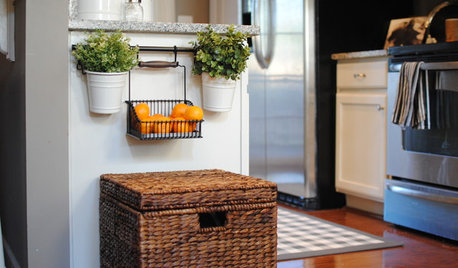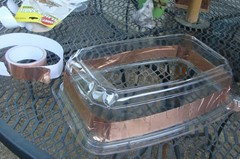Snails eating your starts? Be smart and Strategic.
AndyAlphabet
11 years ago
Featured Answer
Comments (31)
pnbrown
11 years agolast modified: 9 years agoedweather USDA 9a, HZ 9, Sunset 28
11 years agolast modified: 9 years agoRelated Professionals
Carlisle Landscape Architects & Landscape Designers · Holly Springs Landscape Architects & Landscape Designers · New Bedford Landscape Architects & Landscape Designers · Harrison Landscape Architects & Landscape Designers · Brookside Landscape Contractors · Azalea Park Landscape Contractors · Davidson Landscape Contractors · Firestone Landscape Contractors · Harrisburg Landscape Contractors · Haverhill Landscape Contractors · Middletown Landscape Contractors · South Lyon Landscape Contractors · Vacaville Landscape Contractors · Cincinnati Driveway Installation & Maintenance · Des Plaines Driveway Installation & MaintenanceAndyAlphabet
11 years agolast modified: 9 years agoedweather USDA 9a, HZ 9, Sunset 28
11 years agolast modified: 9 years agopnbrown
11 years agolast modified: 9 years agolexie1397
11 years agolast modified: 9 years agoAndyAlphabet
11 years agolast modified: 9 years agonancyjane_gardener
11 years agolast modified: 9 years agoAndyAlphabet
11 years agolast modified: 9 years agoflora_uk
11 years agolast modified: 9 years agoAndyAlphabet
11 years agolast modified: 9 years agopnbrown
11 years agolast modified: 9 years agoAndyAlphabet
10 years agolast modified: 9 years agoflora_uk
10 years agolast modified: 9 years agopnbrown
10 years agolast modified: 9 years agohementia8
10 years agolast modified: 9 years agoedweather USDA 9a, HZ 9, Sunset 28
10 years agolast modified: 9 years agoNilaJones
10 years agolast modified: 9 years agohementia8
10 years agolast modified: 9 years agonewskye
10 years agolast modified: 9 years agoAiliDeSpain
10 years agolast modified: 9 years agopurple1701
10 years agolast modified: 9 years agoAmanda Eastman
8 years agoaftermidnight Zone7b B.C. Canada
8 years agolast modified: 8 years agor4676
8 years agofloral_uk z.8/9 SW UK
8 years agor4676
8 years agor4676
8 years agozeedman Zone 5 Wisconsin
8 years agolast modified: 8 years agoHumsi
8 years ago
Related Stories

GARDENING GUIDES10 Tips to Start a Garden — Can-Do Ideas for Beginners
Green up your landscape even if you're short on time, money and knowledge, with these manageable steps for first-time gardeners
Full Story
LIFE10 Smart Organizing Ideas That Make Life Easier
Rethink where and how you store household basics, from bills to baking supplies, to buy some time and save some headaches
Full Story
EVENTSOn Show: Weird, Wondrous Science Meets Design
Houses grown, not built. Power-generating soil. And snail poop that ... well, see for yourself in our coverage of a new Rotterdam exhibit
Full Story
KITCHEN DESIGNEasy Green: 10 Small Kitchen Changes to Make Today
Taking small steps in going green can lead to big results over time, and starting in the kitchen is a smart choice
Full Story
DECORATING GUIDESBudget Decorator: 12 Ways to Perk Up Your Home for Fall
Get crafty or shop strategically to give your nest that extra-special touch while you’re cozying up on chilly days
Full Story
GARDENING GUIDES10 Easy Edibles for First-Time Gardeners
Focus on these beginner-friendly vegetables, herbs, beans and salad greens to start a home farm with little fuss
Full Story
HOUZZ TOURSHouzz Tour: Just What Mom Wanted, Off the Washington Coast
With an art studio, age-in-place features and a view-maximizing design, this home shows just how well the architect knows his client
Full Story
MODERN HOMESHouzz TV: Seattle Family Almost Doubles Its Space Without Adding On
See how 2 work-from-home architects design and build an adaptable space for their family and business
Full Story
BUDGETING YOUR PROJECTHouzz Call: What Did Your Kitchen Renovation Teach You About Budgeting?
Cost is often the biggest shocker in a home renovation project. Share your wisdom to help your fellow Houzzers
Full Story
FARM YOUR YARDHow to Grow Vegetables in Containers
Get glorious vegetables and fruits on your patio with a pro’s guidance — including his personal recipe for potting mix
Full StoryMore Discussions











floral_uk z.8/9 SW UK